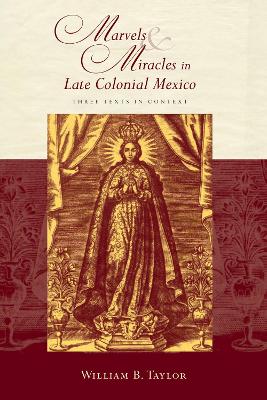Religions of the Americas
2 total works
Miracles, signs of divine presence and intervention, have been esteemed by Christians, especially Catholic Christians, as central to religious belief. During the second half of the eighteenth century, Spain's Bourbon dynasty sought to tighten its control over New World colonies, reform imperial institutions, and change the role of the church and religion in colonial life. As a result, miracles were recognized and publicized sparingly by the church hierarchy, and colonial courts were increasingly reluctant to recognize the events. Despite this lack of official encouragement, stories of amazing healings, rescues, and acts of divine retribution abounded throughout Mexico.
Consisting of three rare documents about miracles from this period, each accompanied by an introductory essay, this study serves as a source book and complement to the author's Shrines and Miraculous Images: Religious Life in Mexico Before the Reforma.
Consisting of three rare documents about miracles from this period, each accompanied by an introductory essay, this study serves as a source book and complement to the author's Shrines and Miraculous Images: Religious Life in Mexico Before the Reforma.
The vast literature on Our Lady of Guadalupe dominates the study of shrines and religious practices in Mexico. But there is much more to the story of shrines and images in Mexico's religious history than Guadalupe and Marian devotion. In this book a distinguished historian brings together his new and recent essays on previously unstudied or reconsidered places, themes, patterns, and episodes in Mexican religious history during the seventeenth, eighteenth, and nineteenth centuries.
William Taylor explores the use of local and regional shrines as well as devotion to images of Christ and Mary, including Our Lady of Guadalupe, to get to the heart of the politics and practices of faith in Mexico before the Reforma. Each of these essays touches on methodological and conceptual matters that open out to processes and paradoxes of change and continuity, exposing the symbolic complexity behind the material representations.
William Taylor explores the use of local and regional shrines as well as devotion to images of Christ and Mary, including Our Lady of Guadalupe, to get to the heart of the politics and practices of faith in Mexico before the Reforma. Each of these essays touches on methodological and conceptual matters that open out to processes and paradoxes of change and continuity, exposing the symbolic complexity behind the material representations.

